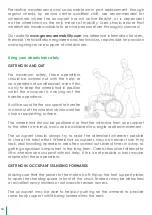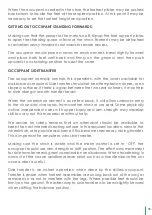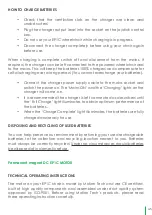
Use of anti-tipers
Anti-tippers are fitted to all Greencare EP1C wheelchairs, both occupant and
attendant carer controlled configurations.
Anti-tippers fit into the lower rear frame. They can be set to allow a degree of
rearwards pivotal movement for manoeuvring. Anti-tippers are not substitutes
for safe and responsible use. It is possible to remove anti tippers for storage,
however, for use they should be replaced in the required position.
Users should be aware that anti-tippers become less effective when the
wheelchair is on an upward facing slope. We recommend that wheelchairs
are not used on slopes greater than
6 degrees. Before taking your wheelchair outside, routine user safety checks
on the main components, and occupant security, should be carried out.
Wheelchair skills training under the supervision of a knowledgeable person or
professional is recommended for all new users. Users who are in doubt about
safety and stability should contact their local wheelchair service for advice.
It is most important that the Assessment Teams are fully satisfied with user skills
and acceptance of responsibility, before allowing use of an EP1C wheelchair.
An attendant controlled wheelchair and occupant should not be left
unattended for long periods. When parking an occupied wheelchair, the
carer should always position the chair on level ground, where access is not
restricted, and so that the occupant can see and communicate as well as
possible.
Power should always be TURNED OFF when an occupant is left unattended.
The LiNX controller fitted has a safety lock that an attendant/carer can apply
to stop accidental activation of the power system.
Transportation with occupant in a vehicle
Belts should not be used as a means of securing an uncooperative wheelchair
occupant in position.
A basic security seat belt may be required after a period of use, if the
environment or method of use changes, or where the occupant feels a need
for greater security in the wheelchair. The wheelchair frame incorporates belt
fitting points, and belts can befitted retrospectively.
Transportation of wheelchairs and occupants in vehicles.
40











































